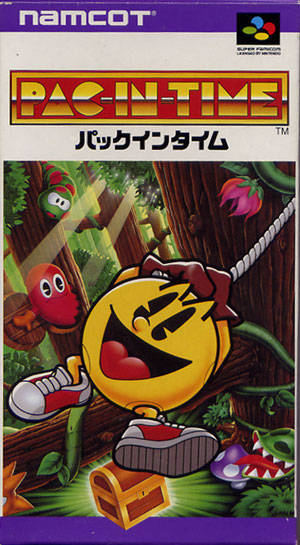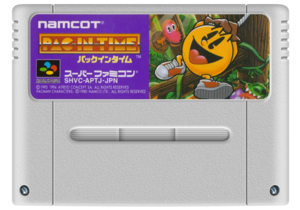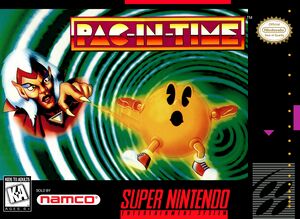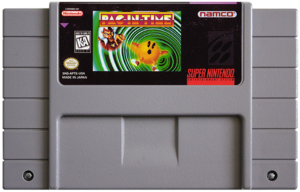Pac-In-Time
パックインタイム
Pac-In-Time (パックインタイム) is a platformer developed by Kalisto Entertainment and published by Sunsoft. It released on the Super Famicom and the Super Nintendo Entertainment System in North America and Europe on January 3, 1995.
Gameplay
The player controls Pac-Man in a mission to return to the present day after being transported to his youth in 1975 by his nemesis, the Ghost Witch. Levels in the game are designed around collecting Pac-Dots and solving puzzles that may require backtracking through the game's fifty levels. On his quest, Pac-Man can gain items by passing through coloured hoops - a fireball attack, a rope that allows him to swing from a ceiling to reach higher places, a pair of swim shoes that allow him to swim underwater, and a hammer he can use to break certain objects. In most levels, Pac-Man may also encounter ghosts, which are immune to the hammer and the fireball, and can only be defeated with a Power Pellet. Pac-Man has a life meter that depletes after touching enemies and certain stage elements, which can be replenished with food items that can be found throughout the levels.
Release
Pac-In-Time is a rebranded version of an earlier title of Kalisto Entertainment's, Fury of the Furries, which released for Macintosh, Microsoft DOS, and Amiga home computers, as well as the Amiga CD32 console in 1993. Pac-In-Time also had versions for Macintosh and Microsoft DOS, as well as a version for the Game Boy. A version for the SEGA Game Gear was planned, but cancelled.[1] A slightly altered version of the Super Famicom game was rereleased in the 2022 title, Pac-Man Museum +.
References
- ↑ https://www.smspower.org/Games/PacInTime-GG, SMS Power!




